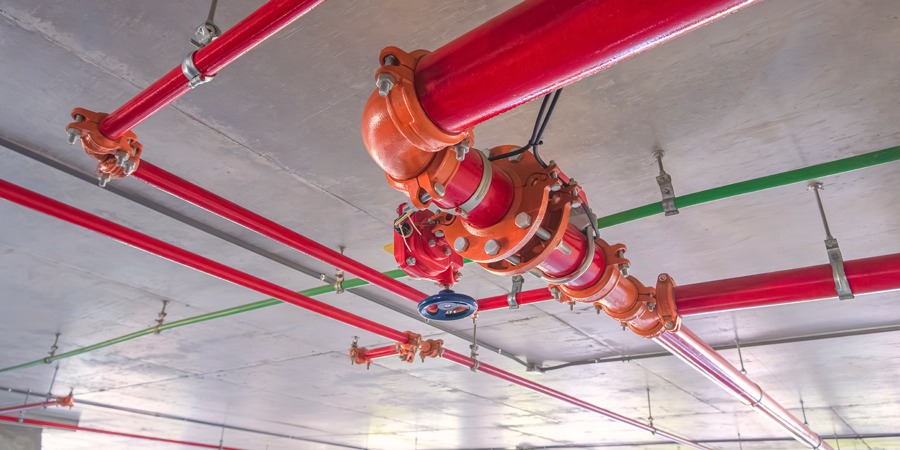
Is your firm’s project team dealing with electrical fire hazards with the urgency and accuracy it needs? One of the most common reasons for building damage and operational disruption in commercial and industrial infrastructures is electrical fires.
Considering the ever-evolving spectrum of building design and construction, electrical fire safety is a critical component to ensure project integrity. To put it simply, electrical fire safety is more than just a regulatory checkbox; it is a necessity.
As buildings become increasingly connected and power-dependent, the risks of electrical fires are growing in both complexity and consequence. For AEC firms, variations between electrical fire protection and prevention are vital to managing project risk.
This article will delve into how contemporary electrical design strategies harmonize both approaches. It will also explain how collaborating with the ideal experts can help mitigate these risks effectively.
Understanding Electrical Fire Risk
The origin of electrical fires in most cases is faulty wiring, overloaded circuits, equipment failure, or short circuits. According to a report from the U.S. Fire Administration, electrical defects result in more than twenty-four thousand fires in the country every year, damaging properties worth nearly $1.2 billion. Staggering statistics, aren’t they?
There is evidence that poor wire insulation, inappropriate grounding, aging infrastructure, and human error in installation or maintenance also contribute to such fire incidents. This makes it clear that fire hazard is as much a design problem as it is a construction or facilities issue.
Defining Electrical Fire Prevention
Fire protection is focused on detecting and eliminating risks before any ignition can actually happen. When it comes to electrical systems, prevention is a matter of reducing the chances of failure or dangerous situations.
Some of the essential strategies comprise:
- Preventive Maintenance Initiatives: To identify feasible faults early, regular thermal imaging, visual inspections, and insulation resistance evaluations are essential.
- Code-Adherent Design: It is critical to ensure conformance with NFPA 70E, NEC (National Electrical Code), and region-specific standards.
- Load Calculation and Circuit Planning: Error-free load analysis, along with ideal cable sizing, is also vital to curtail stress on systems.
- Technology Integration: Smart monitoring systems should be in place to spot potential overcurrent and overheating problems before they escalate.
It is a top priority to understand that prevention efforts should be employed in the design and pre-construction phases. This is particularly relevant for AEC teams and MEP design consultants.
What Really Electrical Protection Is
On the other hand, electrical fire protection emphasizes keeping damage to a minimum after an electrical fire incident has taken place. What is crucial to comprehend is that these systems cannot prevent ignition; instead, they can contain and control fire spread. Some examples involve:
- Arc Fault Circuit Interrupters (AFCIs).
- Fire-rated enclosures and conduit systems.
- Smoke detection and alarm systems.
- Fire suppression systems, such as the utilization of FM-200 clean agents.
- Emergency shutdown protocols.
For response and damage control, protection systems are indispensable and must complement the preventive designs.
Strategic Differences Between Protection and Prevention
Although they often cater to a common goal, fire protection and prevention vary in terms of execution.
| Category | Fire Prevention | Fire Protection |
| Timing | Pre-incident | Post-ignition |
| Primary Goal | Eliminate risks | Control and contain fire |
| Common Methods | Maintenance, design, inspections | Suppression systems, containment |
| Impact on Design | Influences electrical layout and specs | Requires additional materials and devices |
| Regulatory Guidance | NEC, NFPA 70E | NFPA 70, NFPA 75, UL 2196 |
The most effective risk management strategies with regard to AEC projects merge both approaches within an integrated engineering and safety framework.
Electrical CAD Drafting’s Role in Prevention and Protection
One thing is for sure: precise and thorough electrical drafting can be of great help, enabling early-stage risk eradication through the visualization of potential issues. Error-free electrical CAD drawings can deliver clarity in the provisions of:
- Routing and containment systems.
- Segregation of circuits, particularly for critical loads.
- Grounding paths.
- Placement and labeling of equipment.
What is more interesting is that these drawings also help with BIM coordination. Consequently, spatial conflicts decrease that might otherwise compromise access to protective equipment and cable safety.
Utilization of Innovative Technologies in Prevention
As for fire prevention, digital solutions play an increasingly crucial role:
- IoT-powered breakers and relays facilitate live monitoring of current.
- AI-based diagnostics enable predictive upkeep of high-risk equipment.
- Digital twins offer simulation and detection of weak spots within the electrical layout.
Besides, systems such as ABB Ability or Fluke Connect assist in enhancing visibility and handling, specifically in high-demand industrial and commercial settings.
Industry Examples of Failure and Prevention Success
Let’s look at two high-profile cases that underline the requirement for unified electrical fire risk management.
- Failure Example: On 14th February 2025, an arc flash took place inside one of the battery cabinets of the Cyxtera data center in Waltham, Massachusetts. What followed was an explosion that blew the cabinet door and triggered the fire alarm. The fire alarm system of the building was activated, and due to the timely response of the fire department, the facility was evacuated.
This incident indicates the significance of having comprehensive fire protection systems, such as appropriate arc flash detection, compartmentalization, and alarm integration.
- Prevention Success: The Amazon data centers have employed robust fire prevention mechanisms. They involve smart grid supervision, BIM-integrated fire suppression design, and surge protection to deal with risks in a proactive and efficient manner.
Regulatory Compliance and Liability
Failing to ideally tackle electrical fire risk results in increased legal liability. In the context of the U.S., IBC, NFPA, and OSHA codes govern particular measures to maintain workplace and public safety.
Nonconformance to these codes may contribute to the following:
- Project delays.
- Legal actions or fines.
- An increase in insurance premiums.
- Reputational damage.
Fire protection and prevention should always be part of every organization’s risk register. Moreover, it needs to be reviewed periodically by the respective project managers and MEP design engineers.
Integration Through Cross-Discipline and BIM Coordination
Building Information Modeling can facilitate designers in synchronizing fire-safe electrical systems with architectural and MEP features. As a result, BIM tools can help resolve spatial inconsistencies in electrical routing, coordinate with fire-rated wall assemblies, and identify penetrations that need fire-stopping.
UPPTEAM’s multidisciplinary teams employ BIM for cross-functional fire risk assessments. The purpose of this evaluation is to deliver designs that comply with relevant codes and are construction-ready. Besides, proficient MEP design and consultancy services also guarantee the incorporation of holistic fire protection systems. They come with the features of reliable fire detection and suppression systems, tactically positioned sprinkler layouts, and sufficient emergency lighting.
Designing for Resilience and Future-proofing
It is of utmost importance to ensure that future-ready designs take care of evolving fire risks. Modular systems must enable streamlined upgrades according to code changes. Overall protection should be scalable so that it can adapt to changes in load. Meticulously designed power systems need to be resilient enough to isolate faults and reroute electricity to sustain uninterrupted service.
So, clients who partner early with firms like UPPTEAM can benefit from more innovative design choices that assure long-standing compliance, uptime, and safety.
Final Views
It would be a mistake to consider the management of electrical fire risk a static checklist. Instead, it is a dynamic design approach in which both prevention and protection function at the same level of efficiency.
From smart monitoring to BIM-enabled coordination, modern AEC firms must align their electrical safety strategies with transforming technologies and regulatory requirements.
UPPTEAM’s unified electrical engineering and drafting proficiencies can deliver clients the much-needed tools to satisfy these needs. Be it designing a healthcare facility or a data center, you can rely on our team to provide design solutions that help establish safe, efficient, and future-proof environments.


















